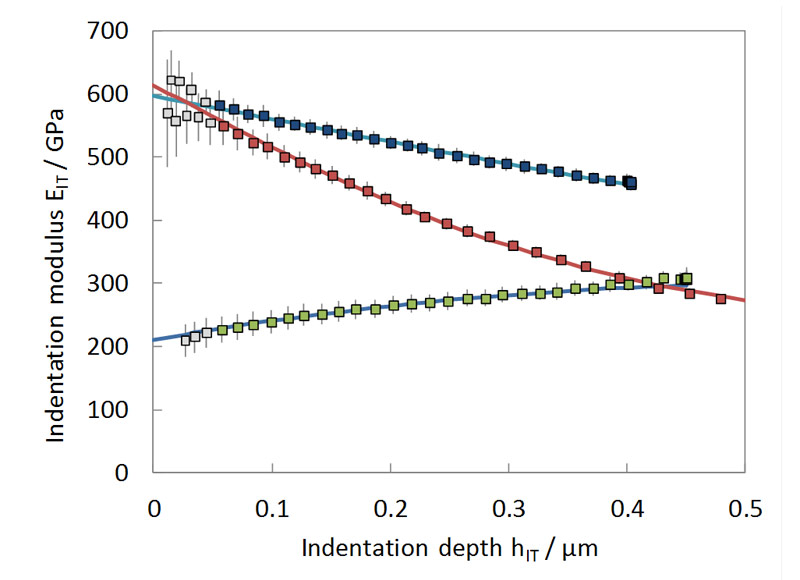Characterization of Coatings

Detailled analysis of scratch test tracks yields information on adhesive and cohesive failure.

Stress analysis on a multi-layer coating.

Advanced measuring and evaluation techniques allow precise determination of indentation modulus, indentation hardness and coating thickness, using instrumented indentation testing even on superhard coatings.
Subject of our work is the characterization of coatings of all kinds in the range of 0.1… 500 µm thickness, with emphasis on PVD coatings and amorphous carbon coatings (often called DLC). Based on our everyday work, we are especially experienced in the field of superhard, tetrahedral amorphous carbon (ta-C).
We Analyze
- friction and wear
- hardness, Young’s modulus
- adhesion
- coating thickness
- intrinsic stresses
- roughness (2D, 3D)
- binding structure (e.g. sp3-content)
We Use
- several tribometers, motion: roating/oscillating, temperature: ‑5…350°C, environment: lubricated, unlubricated, controlled atmosphere, vacuum
- laser-induced surface acoustic wave spectroscopy (LAwave)
- several scratch testers with maximum loads of 2, 30 and 100 N
- instrumented indentation testing (nano range 0.01…2 N and micro range 0.1…30 N)
- profilometer for tactile method and measurement of curvature
- Raman spectroscopy, typically with 514 nm excitation wave length
- crater-grinding method
- software for contact mechanical simulation (FilmDoctor)
- microscopy: SEM, EDS, TEM, light optical, 3D (confocal, interferometric)
Thanks to interdisciplinary cooperation with other groups we offer access to the knowledge and testing equipment of the Material Characterization and Testing group and other business fields. We will be happy to advise you.
Scientific Focus of Our Work Is
- research of special tribological properties of amorphous carbon coatings, for example superlubricity, behavior with renewable lubricant and tribochemical wear mechanisms, screening of lubricants and coatings
- simulation and experimental verification of contact mechanical situations (e.g. indentation, scratch testing), followed by optimization of the coating architecture
- methodical investigation concerning quantification of adhesion, using single postcritical (scratching) or multiple non-critical loads (rolling)
- Raman spectroscopy on different carbon modifications for evaluation of structure and electron configuration, for example after energy exposure through temperature or tribological stressing
 Fraunhofer Institute for Material and Beam Technology IWS
Fraunhofer Institute for Material and Beam Technology IWS